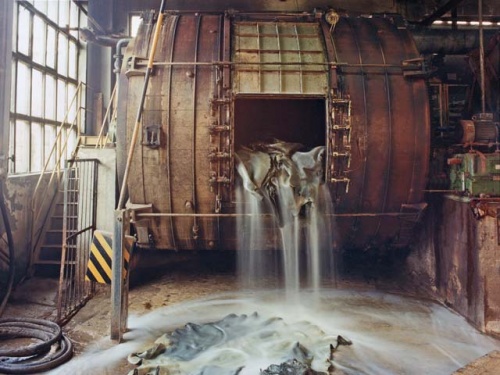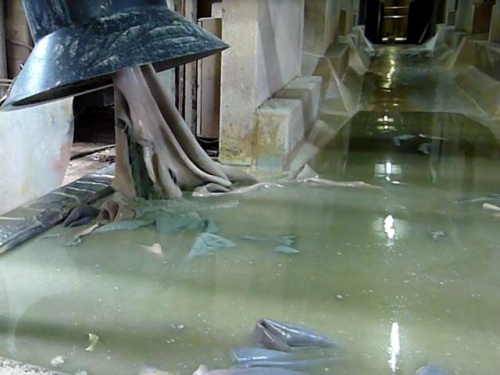Wastewater from tanneries
Tannery wastewater
During the Middle Ages, tanneries were typically located along waterways and were one of the main causes of river pollution, as they produced large amounts of contaminated and foul-smelling wastewater. Tanners needed water to wash, process, and tan animal hides, as well as to dye leather. The resulting wastewater was often discharged directly into rivers or other bodies of water, leading to significant environmental problems. The wastewater from tanneries that was discharged into rivers caused significant water pollution, resulting in poor water quality, fish kills, and outbreaks of disease among residents along the waterways. Therefore, it was not uncommon for authorities in urban areas to impose regulations governing the location of tanneries to protect the city and its inhabitants.
Tanners in the Middle Ages handling wet leather.
In contrast, modern tanneries are much better regulated and controlled, and there are a variety of environmental laws and regulations in place to ensure that their wastewater is properly treated before being returned to the natural water cycle. Modern tanneries have advanced wastewater treatment systems that enable them to remove pollutants and ensure that the treated water meets required quality standards. In addition, the type of chemicals used in leather production has changed significantly and when choosing, care is taken to ensure that the chemicals do not pollute the waste water, but that residues can be filtered out. The amount of water used for tanning has also been significantly reduced over the last few decades in order to significantly reduce water consumption and waste water volumes. Nowadays, on average between 600 liters and 1,000 liters of water are needed to produce a leather hide.
The wastewater at modern tanneries does not smell and is often cleaner than the water supplied to the tannery. Unfortunately, many tanneries in less developed countries are still backward and pollute waterways, which is no longer the case in developed countries.
Leather after liming in the barrel.
Additional information











 a kotori web solution
a kotori web solution